For those of you who hate reading long winded articles I’ll get to the conclusion of this right up front. The Salient Arms International (SAI) MK25 Tier 1 Prototype was the most enjoyable gun I’ve ever owned/shot. I’m not saying it was perfect, but I can say unreservedly that it made it much easier for me to shoot faster and more accurately than I ever had in the past. Interestingly enough when I first received the firearm back from SAI I thought that perhaps some of the modifications were maybe a bit unnecessary, or over the top, I actually think my first thought was “Someone got happy with the mill”. Let me go on record saying I was completely wrong, I apologize, and there wasn’t a thing done to this gun that didn’t serve a purpose one way or another.

The million dollar question of course is would it be worth it to drop the coin to have similar work done to your gun when they release their commercial package? The answer is, it depends on who you are and what you like. Official pricing hasn’t been released yet but from looking at their other product offerings I can take a wild guess and say it won’t be cheap. For me the improvements to the platform are substantial enough that I haven’t enjoyed shooting my other Sig nearly as much since giving up the Salient (more on that later). As always your mileage may vary but for a bit of contextual information, I’ve already sent another Sig to them to be upgraded and unlike the prototype, I will be paying for the work that’s done to this one. Spending my money on something is about the highest personal endorsement I know how to give, and in my limited experience SAI makes quality stuff that WORKS and WORKS WELL. So there you go, now for those of you who ENJOY reading long winded articles, continue reading.
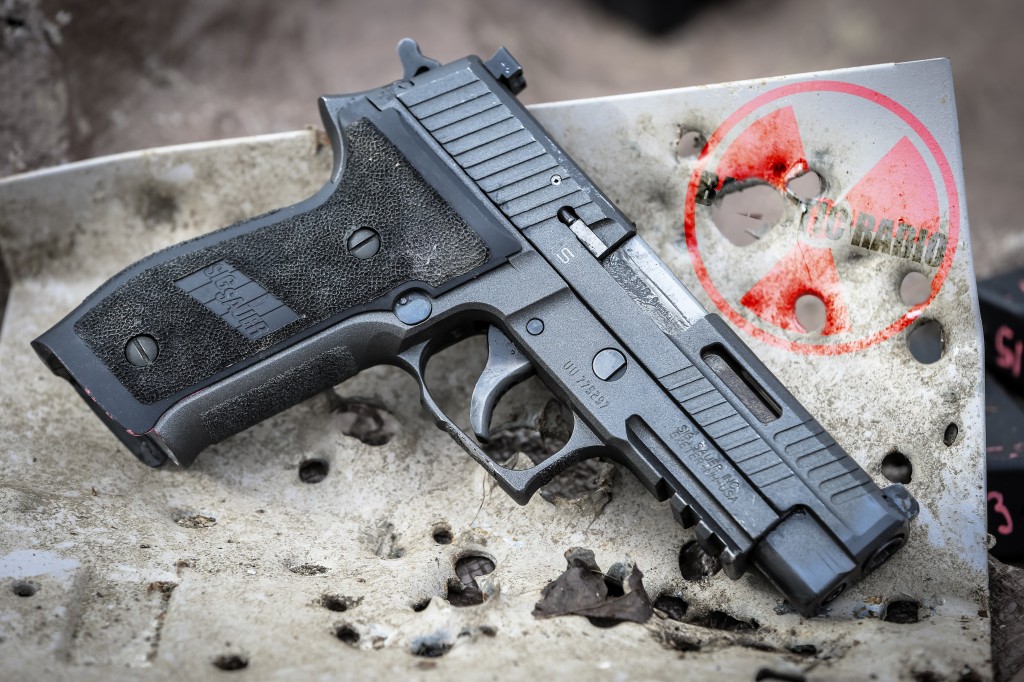
When SAI and myself first began to talk about collaborating on a Sig project we had a couple of goals in mind. While I had been a fan of the Sig platform since switching to AIWB (Appendix Inside the Waistband) carry, there were several things about the platform that were…bothersome. There were also some things that I was perfectly happy with, or that I thought were non-issues that SAI assured me could be improved on. Sure ok, I’ll try anything once. So, now that I’ve seen 25,104 rounds shot through the gun let’s talk about what they did, and how well they did it.
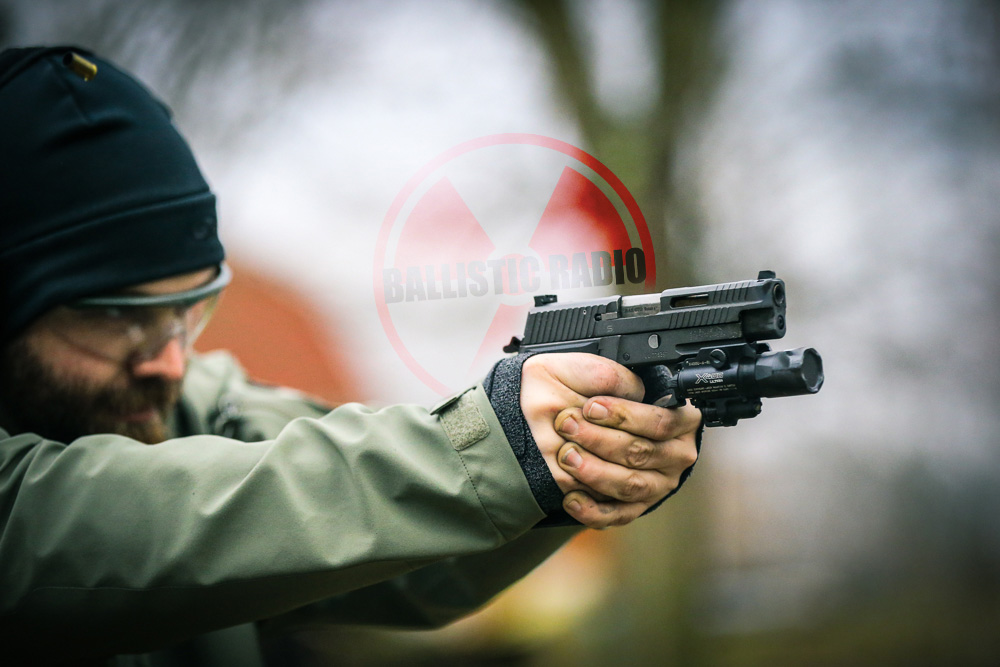
The list of modifications looked something like this.
- FRAME MODIFICATIONS
- Frame heavily modified to facilitate a higher grip on the gun, including reshaping the beavertail area, undercutting the frame at the base of the trigger guard as well as the trigger guard itself.
- Texture added to front strap, underside of trigger guard, front of trigger guard
- A set of Sig Tacops grips were shortened and reshaped to create a useable mag-well for concealed carry purposes.
- FCG modified for decreased reset/smoother take up
- Trigger reshaped/lightened
- Hammer lightened
- SLIDE MODIFICATIONS
- Slide lightened and re-profiled / Forward serrations added
- Reduced power Wolff recoil spring added.
- Custom Bar-Sto match fit barrel
When I first received the gun back from SAI I was incredibly impressed with how much higher a grip I was able to get. Now while I’ll agree that bore axis is often times over stated in terms of aiding/hindering recoil management, it certainly doesn’t hurt to be able to get a higher grip on the gun. SAI actually removed enough material from the frame at the base of the trigger guard that when I first showed pictures of the modifications several VERY knowledgeable people were worried that the frame would crack if placed under a heavy firing schedule. 25,000+ rounds later it’s easy to say those fears were unfounded, but at the beginning of the test it was certainly of concern to me. They did a wonderful job of reshaping the beavertail portion of the frame as well, though there was one sharp corner that they missed. It ended up breaking open a callous on the web of my shooting hand around the 17,000 round mark though in fairness I don’t think it’s something that would ever be an issue for the average shooter. Also, SAI plans to address that on the production version.
The texture added to the front strap, underside of the trigger guard, and the grips themselves was VERY aggressive. Several people commented that it was going to tear my hand up in short order. It actually felt perfect to me in level of grip, seeing as I prefer for the gun to move as little as possible when I am shooting. That’s not to say that eventually I didn’t bleed, but that was more of a function of the firing schedule than the texture itself. I actually made it through almost 10,000 rounds before my hands started to show any signs of wear at all. Oddly enough the texture they added to frame held up worse than my hands did, eventually completely flaking off the underside of the trigger guard, and partially flaking off of the front strap. In talking with SAI as the test progressed they have diagnosed why that issue occurred and have devised a way to fix it on future guns, though I doubt there are many people who would shoot theirs enough, under the conditions I was shooting in, to see the issue in the first place. Overall I found the texture just about perfect, though for the normal user it may a bit rougher than they’re used to. The grips themselves were shaped perfectly and made reloads a little more consistent for me at speed. Unfortunately at some point during the test either through the firing schedule, or more likely due to me over-torquing a screw, one of the grip screw bushings became completely stripped. I threw a set of the excellent VCD Grips stippled E2 single piece grips on the gun and drove on. Note to self, as tight as I can possibly get it, is not a correct torque setting for a grip screw. Whoops…
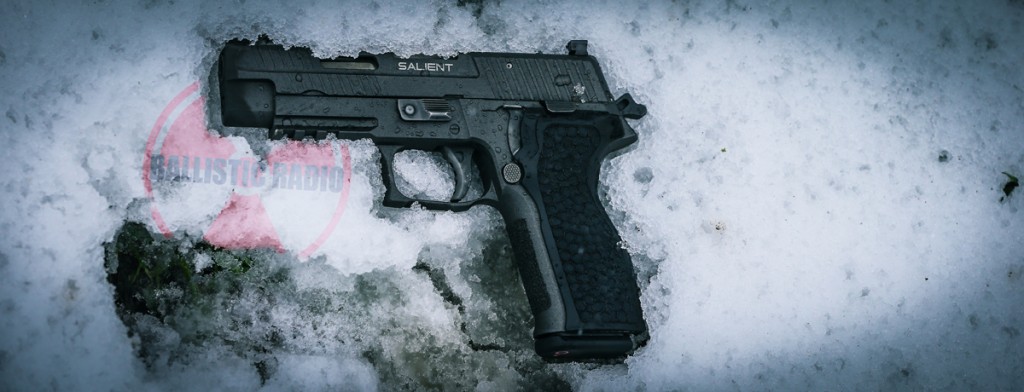
Through manipulation of the internals of the gun (don’t ask me, I just shoot the things), as well as lightening the hammer SAI was able to SIGNIFIGANTLY improve the trigger feel over the stock pistol. The double action pull was incredibly smooth, with a single action reset that was even shorter than the SRT trigger I had been shooting. A quick anecdote, when I finished the test and picked up my stock Sig to re-familiarize myself before I started carrying it again I found myself short-stroking the SA trigger pull of the SRT trigger for the first few hundred rounds I ran through it. If you had asked me before the test if it’d be possible to short-stroke an SRT trigger I would have told you you were crazy, and I’d have been wrong.
One of the more subtle things that they did was reshaping the trigger itself, including lightening it by boring holes into it’s face. This was another area that garnered attention when I first showed photos of the gun. For me personally the increase in tactile awareness that the lightening holes imparted had a direct connection to improved trigger control. I found myself much less likely to throw a shot either in dry fire or live fire just because of the constant feedback I was getting from the face of the trigger. I think SAI may have inadvertently discovered something cool with this mod, I know I’d like to shoot another pistol with a similar trigger face just to see if it is an actual benefit or just my imagination.
The most clearly visible modification to the MK 25 that SAI performed was the work done to the slide. In addition to completely changing the profile of the slide itself, SAI also added lightening cuts to reduce slide weight, as well as forward serrations to aid in overall manipulations of the pistol. It was no surprise to me that the most clearly visible change to the gun was also the change that garnered the most hate from the interwebz. The idea behind the slide lightening is that by decreasing the mass that is reciprocating back and forth on top of the frame of the gun (i.e. reduce the weight of the slide) you also decrease the felt recoil/muzzle flip to the shooter. An additional benefit is that you see an increase in slide velocity which theoretically puts your sights back on target faster while possibly increasing reliability (assuming the slide isn’t cycling faster than the springs in the magazine can keep up). The most common concern that people seemed to have was that by cutting holes in the slide you were likely to introduce debris that would somehow effect reliability. I did not find this to be the case, and my experience with both Glock G34’s and Beretta M9’s would seem to support the idea that openings in the slides will effect reliability is simply not true.

As far as the added serrations at the front of the gun go. While I did find them to aid in weapons manipulations, especially one handed malfunction drills, I wouldn’t be distraught if they were not present on the production gun. I would prefer having them on the gun over not, but I will say this was probably the modification that I got the least excited over from a performance standpoint. From a visual standpoint I thought that they improved the overall look of the gun, but as always, beauty is in the eye of the beholder.
The pistol experienced exactly 1 failure over the course of 25,104 rounds, and it was directly linked to one change the SAI made to the gun. In changing the weight of the slide SAI tried to tune the recoil characteristics even further by putting a Wolff reduced power recoil spring into the gun. This caused a problem that took 3,124 round to develop, but when it occurred it COMPLETELY locked the gun up. As in it took two experienced shooters with a rubber mallet and a punch to clear the malfunction. Here’s what happened…
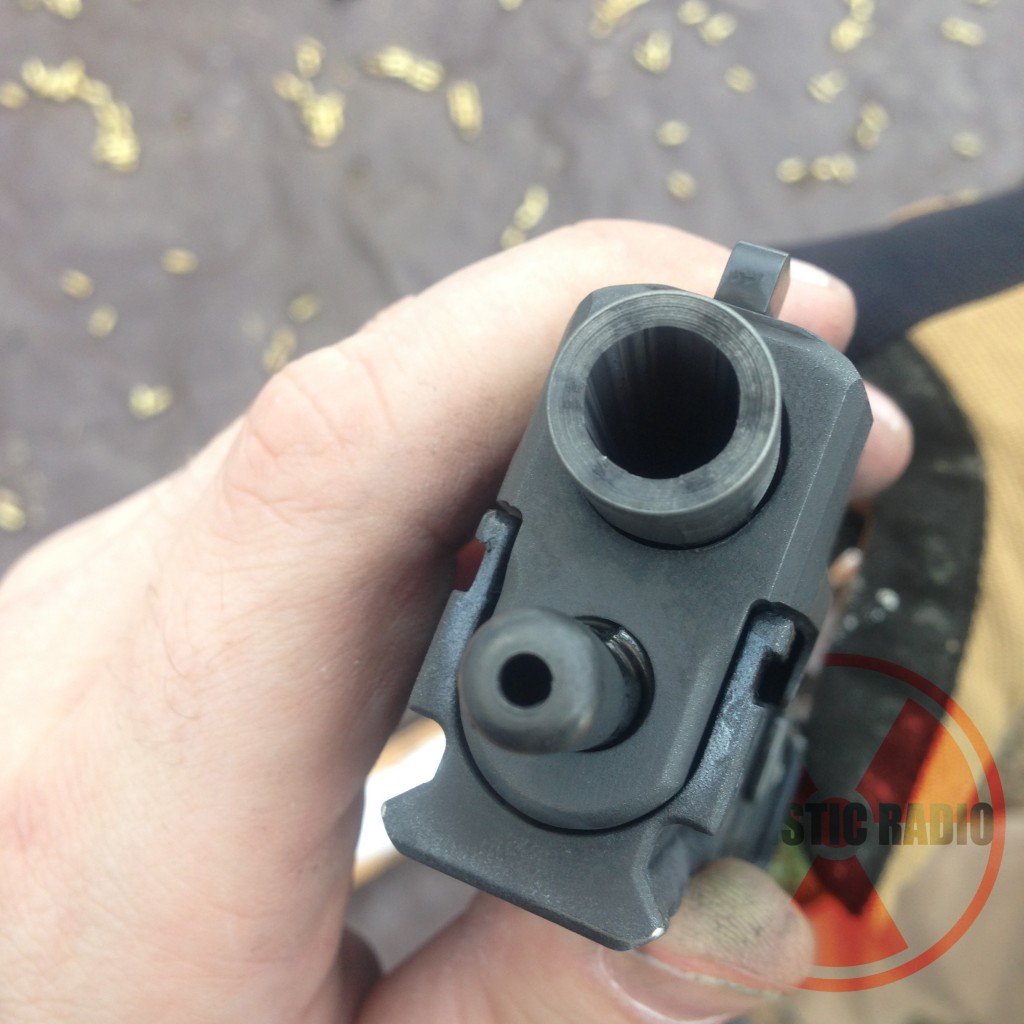
The Sig factory spring is a multi-strand affair that is supposed to increase overall service life. This is what the pistol/guide rod is designed for, and what it is most happy with. The Wolff spring on the other hand is a single-strand design. Apparently what can occur with the single-strand design is that the end of the spring itself can become trapped between the dust cover and the guide rod, effectively locking the gun up completely. I actually feel bad about this, because it’s a known issue, with a work around already in place, that I had no clue existed until it happened to me. One of the reasons SAI had me on board for the project in the first place was my familiarity with Sigs. When they were building the gun they discussed my thoughts on using a reduced power Wolff spring and I informed them that I didn’t think it would cause any issues. Shows what I know. The production version of the gun will have this issue addressed.
The interesting part about this is that this happened After 3,123 previous rounds had gone down range without a hitch. Let me put that into perspective. I will usually shoot around 1,500 rounds before I declare a gun reliable enough for me to feel comfortable personally carrying it. It was an interesting feeling when I considered the ramifications of a similar malfunction, however unlikely, occurring in a defensive situation. Carrying a second gun is never a bad idea. For what it’s worth, this was the only malfunction the gun had, and afterwards it went on to fire 21,980 consecutive rounds, with very little to no cleaning, without further issue.
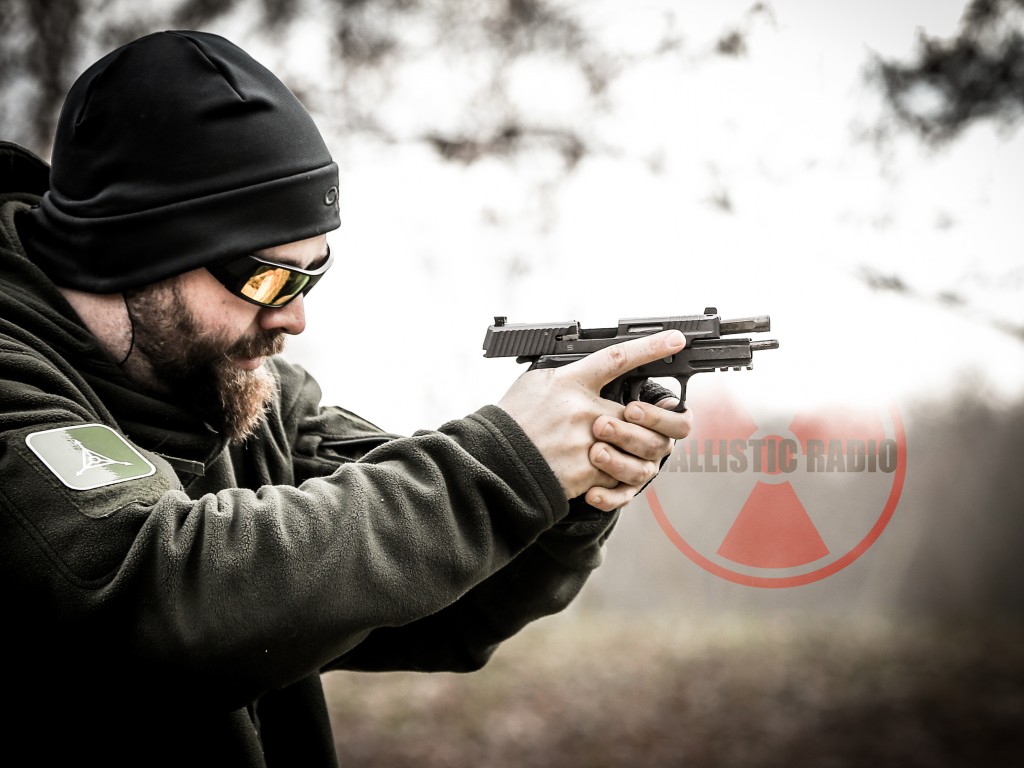
That brings us to our final point. The Bar-Sto match fit barrel that SAI fit into the gun was simply incredible. While I had originally intended to ransom rest the gun at the start of the test, conflicting schedules with the owner of the ransom rest prevented me from doing so. That coupled with an incredibly short shooting schedule meant that I did not get a chance to accuracy test the gun until AFTER 25,000 rounds had been fired. The results were simply incredible. From 25 yards I fired 3 5-shot groups supported from sandbags using Asym Precision 115gr action match ammo. The smallest group measured just a shade over 1” while the widest group was right around the 2.25” mark. Did I mention this was AFTER 25,000 rounds had been fired? I really regret not getting the chance to shoot it for groups earlier in the test, I suspect it may have performed even better when fresh.
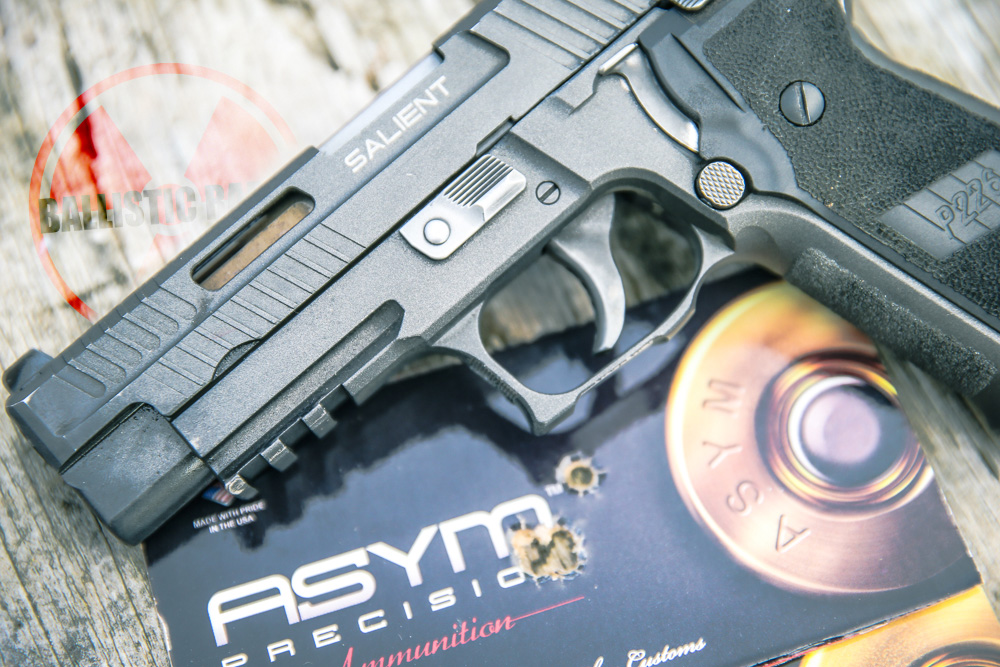
So there you have it, the long awaited final update of the SAI MK25 Tier 1 Prototype. So what happened to the pistol you might ask? I decided at the end of the test that instead of letting it gather dust in my safe, it would be better to try and do some good with it. With the help of Crye Precision, and Salient Arms International we were able to raise over $6,300 for military charities, including The Unit Scholarship Fund at Crye Precision’s SHOT Show silent auction. While I deeply miss the test gun, and actually felt a sense of depression at it’s absence, I am very glad that we were able to help some folks out with it once everything was said and done.
Before I finish, I feel it’s vital to thank a couple of different people:
- First off, Todd Louis Green of www.pistol-training.com for setting the example for what good honest reporting on a firearm should look like. I’ll be the first to admit I get most of my ideas by watching what Todd does closely and then stealing it, but hey, imitation is the sincerest form of flattery right?
- Adrian at SAI for allowing me to PUBLICLY test their prototype gun. It took some stones on their part to allow me to take part in this project and report on it the way I wanted to, and I am thankful for trust they showed in me.
- Lisa at Armscor for the donation of 20,000 rounds of their excellent 9mm ammunition. Out of 20,000 rounds we had only 1 bad round that would not ignite no matter how many times we hit it. That’s pretty damn impressive if you ask me.
- Jason and Keith from Sight Picture Media for making me look way cooler on video than I actually am.
- Michelle at Top Gun Supply for giving me the ability to load 500 rounds at a time via magazine donations. The test would not have finished on time if I had had less magazines to work with.
- Tom from Dark Star Gear for making awesome kydex for the test. Oddly enough he’s the biggest Troll that the show has, but he’s good natured about it and an awesome dude. Oh yeah, his stuff is pretty kick-ass too.
- And last but not least, Kyle Hufford for making the decision to put me on air in the first place. Everything else came from that, and I’m grateful.
FINAL SCORE:
Rounds Fired: 25,104
Malfunctions: 1
Parts Breakages: 1 – If you count the dumb-ass operator stripping a grip screw bushing as a breakage
Money Raised for Charity: $6,300+
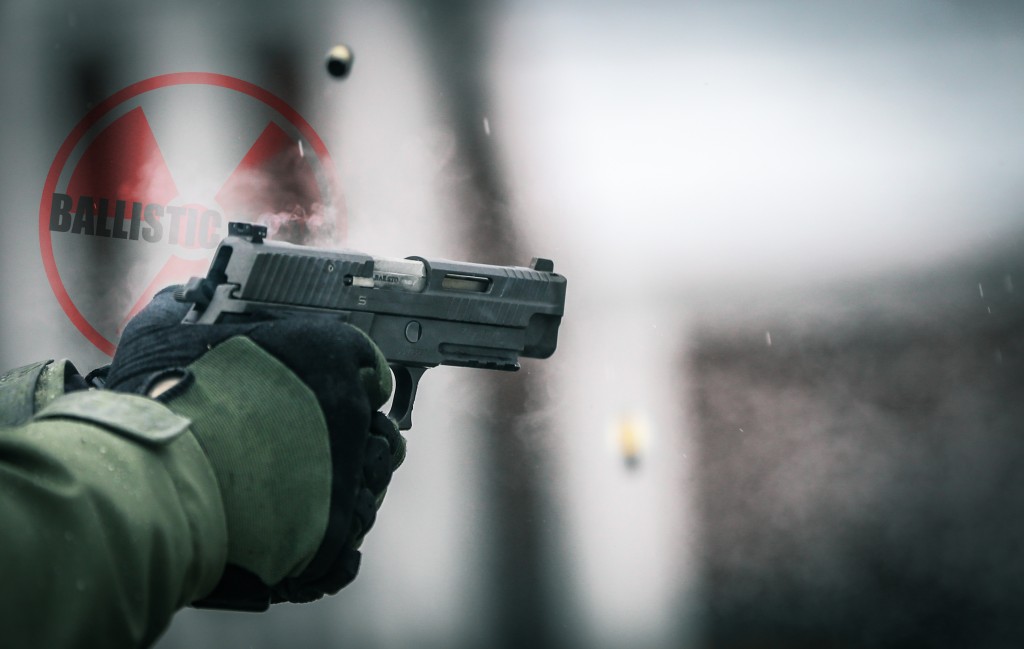
Stay tuned for my next long term pistol test. 50,000 rounds through FNH’s new FNS-9L. Be safe everyone!

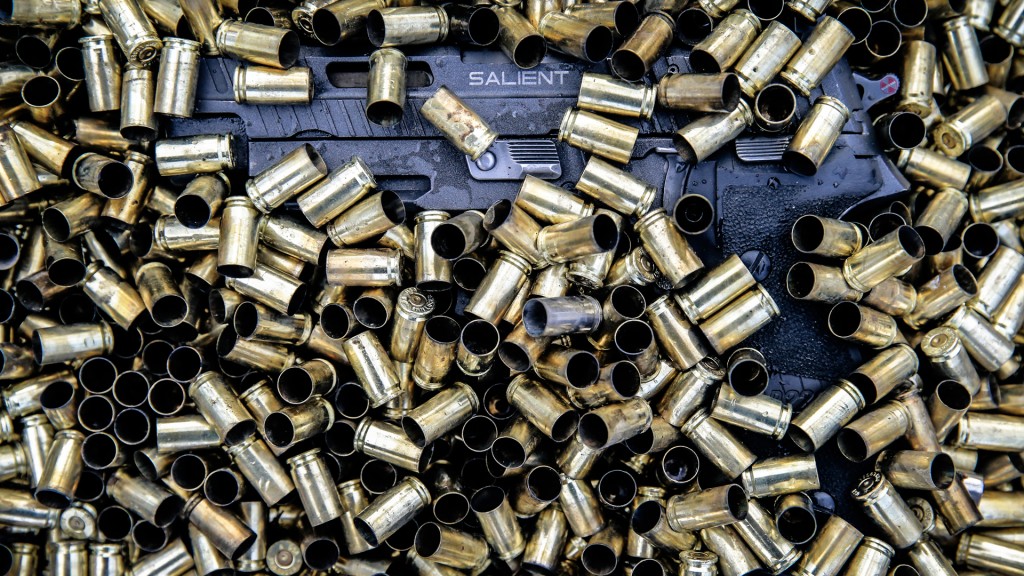

Very nice read. What’s that rig you’re using in the video (holster, mag carrier) I’m looking at a Sig Sauer Legacy 226 and thinking that if I fall in love with it I’ll get a second one and send them one at a time to Salient (two is one and one is none) and G-Code the maker of my preferred AIWB rig stipulates on their site that their holsters will not work with the MK25 frame (which the legacy uses) so I’m looking for a good and solid rig.
Thanks much for the great read. I’m very, very, very interested in Salient now and don’t be too hard about the dumbass operator breaking a grip screw. My first time trying to fit a manual safety to a 1911 was a comedy of errors so epic that had any of my buddies from the service been around I’d have never heard the mother-flipping-end of it.
Holster is a Dark Star Gear AIWB.